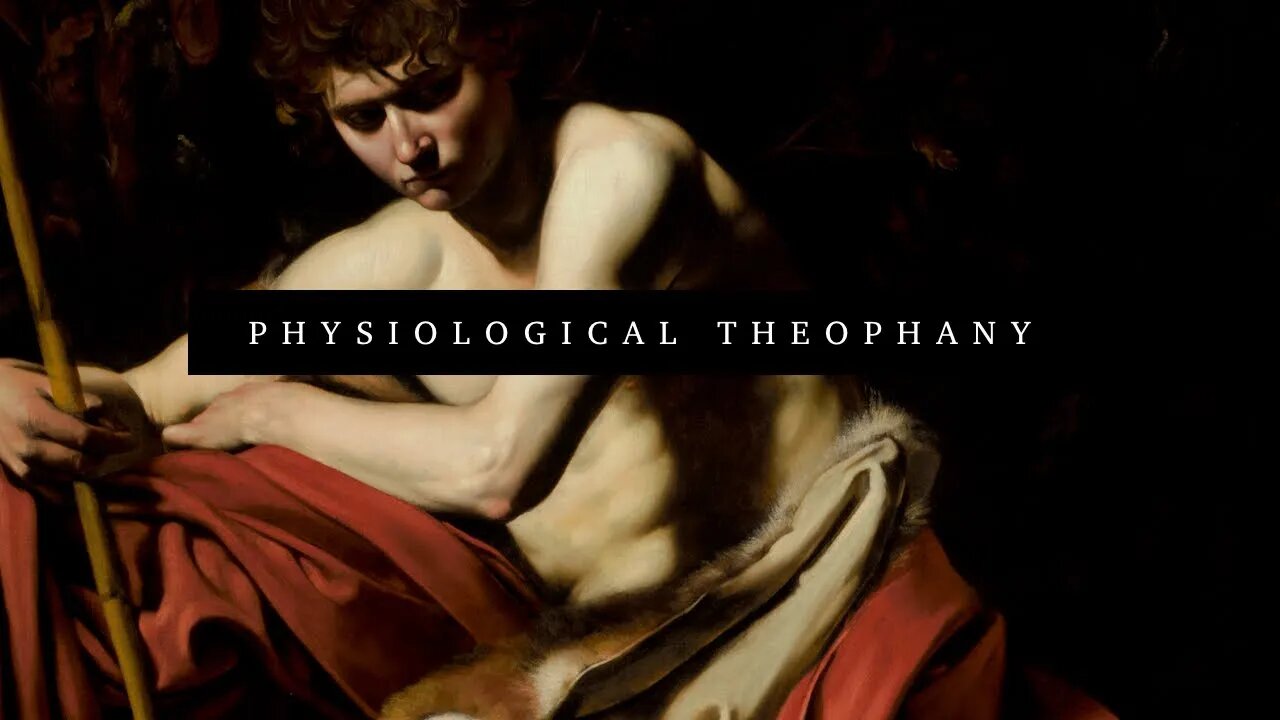Premium Only Content

God in the Body │The Physiological Theophany of Caravaggio │Understanding Art
Few artists have been as stormy and boisterous as Caravaggio. His stormy personality may have been the source of his unique style of painting. Caravaggio's paintings are dramatic. Caravaggio's technique creates a vivid reality. Even when he paints seemingly banal scenes, they are propped against a looming in the darkness, the shroud of some kind of lovecraftian eldritch horror pressing in on us. In terms of lighting and color, the images are dark, steeped in shadow. The best descriptor is perhaps to say that his paintings brood.
This is no less true of his religious paintings.
His St. John the Baptist in the Wilderness is dramatically different from contemporary depictions of John by fellow Italian artists Caracci and Albani, and previous paintings by Leonardo da Vinci and Titian.
Caravaggio's John is strangely grim, strangely grim for a young man just on the cusp of high school.
But how old is he really? Is he 16 or 30? Shadow has taken him beyond age. Here is a young man who is weighed down with the gravity of his divine mission. Though a youth, he bears the weight of centuries.
Some 700 years before John the baptist lived, the prophet Isaiah prophesied that God himself would come to earth—somehow, in some form. When the king comes to town, a messenger is sent in front of him to prepare the people, because the king after all, deserves their acknowledgment, but more importantly, they need to get out of his way, clear the crowd, get out of the way. The messenger cries for the crowd to be parted. But When God comes to town, well, then the messenger cries for the valleys to be lifted up, the mountains to be leveled—not because God might be hindered, but because there must be no obstruction when the glory of the Yahweh shines.
Every Jew of the first century would have known this, including John, and moreover, his parents would have pointed to him and said—that is you—you are the one to clear the path for Yahweh—you and you alone.
I think it's bold for a painter to try and portray the truth of a human being, let alone a young human being, who faces the grim task of God before him. Kierkegaard often maintained that when a person gets involved with God, life becomes infinitely more difficult and strenuous—glorious, yes, but infinitely more strenuous. For Caravaggio to attempt to portray that is in and of itself the kind of brilliant insight that occurs only to geniuses—and to actually pull it off so that we feel and see that God-relationships is beyond astounding.
I can't help describing this painting as existential. Caravaggio biographer Peter Robb says, The painting demonstrates Caravaggio's "feeling for the drama of the human presence.” It is assertive. The painting claims the art museum for its own.
-
 35:56
35:56
Empire of the Mind
2 years agoA CLOCKWORK ORANGE'S Prediction of DYSTOPIAN DEMOCRACY: the Rise & Failure of AUTHORITARIANISM
4562 -
 LIVE
LIVE
Razeo
1 hour agoEpisode 6: Resident Evil 4 - HARDCORE DIFF 1st playthrough series.
67 watching -
 2:16:19
2:16:19
vivafrei
11 hours agoEp. 273: Russia Hoax CONFIRMED! Will ARRESTS Follow? Trump SUES WSJ! Epstein Docs Release? & MORE!
71.6K51 -
 LIVE
LIVE
EricJohnPizzaArtist
6 days agoAwesome Sauce PIZZA ART LIVE Ep. #55: Wendy Wild!
142 watching -
 11:54
11:54
Tundra Tactical
3 hours ago $1.00 earnedIf You Laugh at These Gun Memes, the ATF Gets Your Dog – Tundy Meme Review
10.1K -
 LIVE
LIVE
ObiPwnShinobi
1 hour agoSunday Night Solos! 🎯🎯🍗🍗
35 watching -
 2:05:32
2:05:32
Nerdrotic
3 hours ago $1.30 earnedForbidden Inventions and Shadow Cover-ups | Forbidden Frontier #109
13.4K -
 LIVE
LIVE
ManoloCalifas
1 hour ago🔴 LIVE - WARZONE SUNDAZE
24 watching -
 3:21:46
3:21:46
Barry Cunningham
10 hours agoPRESIDENT TRUMP HAS EXPOSED BARACK OBAMA AS A TRAITOR! AND MORE NEWS!
36.1K59 -
 LIVE
LIVE
Big Modo Gaming
1 hour agoChill WoW Night: Legion Dungeons + Leveling Alts w/ Controller part 2
8 watching